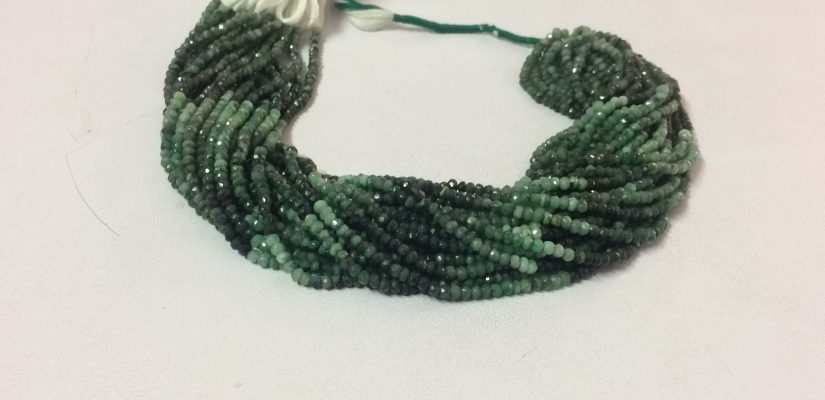
From History to First Discovery: Some Interesting Facts About Emeralds
Emeralds set their own class and style statement. They’re beautiful, precious and impeccable. It is significantly the blueish-green hue of these stones that makes them one of the most desirous stones in the market out there. But do you really know everything about your favourite gemstone? From history to its first discovery, there’re many interesting facts about emeralds that the world is unknown about. Are you curious to learn more about the stones? Well, let us disclose all the vital facts and information one by one.
Are you ready? Shall we start? Okay. Here we go!
Knowing Your Favourite Gemtone Better:
-
Besides, ruby, sapphire and diamond, emerald is one of the widely known precious gemstones/ natural gemstone beads.
-
You might be already familiar that Emerald is referred to as the birthstone for the month of May. It is a customary gift that is passed on the 20th, 35th as well as 55th wedding anniversaries in the countries such as United States.
-
Similar to the aquamarine which is yet another bulk gemstones, emerald is composed out of beryl. Beryl is simple a mineral which is made up of beryllium aluminium cyclosilicate.
-
Ever wondered from where the beautiful emeralds derive their color? It obtains its green shades from the meagre quantity of either chromium or vanadium.
-
Did you know? One carat diamond seems to be smaller as compared to one carat emerald. Interestingly, this is due to the unique lower density characteristic of emeralds.
-
If we talk about the precise measurement of these precious gemstones on the Mohs Scale of Hardness, these measure from 7.5 to 8. Everyone is too fond of emeralds because it’s durable nature. Usually, one has to pay a handsome price for emerald jewellery. The reason behind it is that transforming emeralds into a piece of jewellery is a challenge in itself. Emeralds are vulnerable to cracking which makes them exorbitant.
-
The world’s major production of emeralds comes from Colombia. Colombia is solely accountable for more than 50 percent of the global emerald production.
Let’s Turn The Pages Of History:
Can you guess the age of the oldest pieces of emeralds?
They’re almost as old as 2.97 billion years. Doesn’t it sound fascinated?
When and where were the first emeralds mined?
It occurred somewhere around 1500 BC in the City of Pyramids, Egypt.
When and who discovered the Emeralds?
Spanish were the first ones to discover these mesmerizing stones in the 16th century. The discovery took place in South America. Before the actual discovery, emeralds were used by the pre-Columbian America’s largest empire, Inca Empire.
Did North America too discover emeralds?
Well, it did! It was back in 1997 in the Yukon territory of North America, that the precious natural gemstones were first found. There is a substantial emerald deposits in the United States.
What led the making of the first synthetic emeralds?
According to the experts, it was in the year 1907 when the first synthetic ruby and sapphire were developed. But the making of synthetic emeralds happened after approximately 35 years from them. It was the magnificent American chemist named as Carroll Chatham who experimented out to create his first 1-carat Chatham emerald. And guess what, it turned out to be a massive success. If you’re want to witness what the first synthetic stones appeared like, visit the Smithsonian Institute.
Last but definitely not the least
A few essential tips relating to emeralds:
-
Keep in mind that you do not clean these Natural Gemstone Beads with ultrasonic equipment. The best way to remove the dirt and grease from the surface of emeralds is to clean them using lukewarm water with gentle hands .
-
If you’ll analyze closely, you’ll find that emeralds are blanketed with baby oil. This serves as a precautionary measure against cracking or breaking. You can also do oiling to fill up the cracks of the gemstones. A little care can make your bulk gemstones last longer.
Hope, you found this article informative. For any queries and suggestions, feel free to connect with us!
Recent Comments